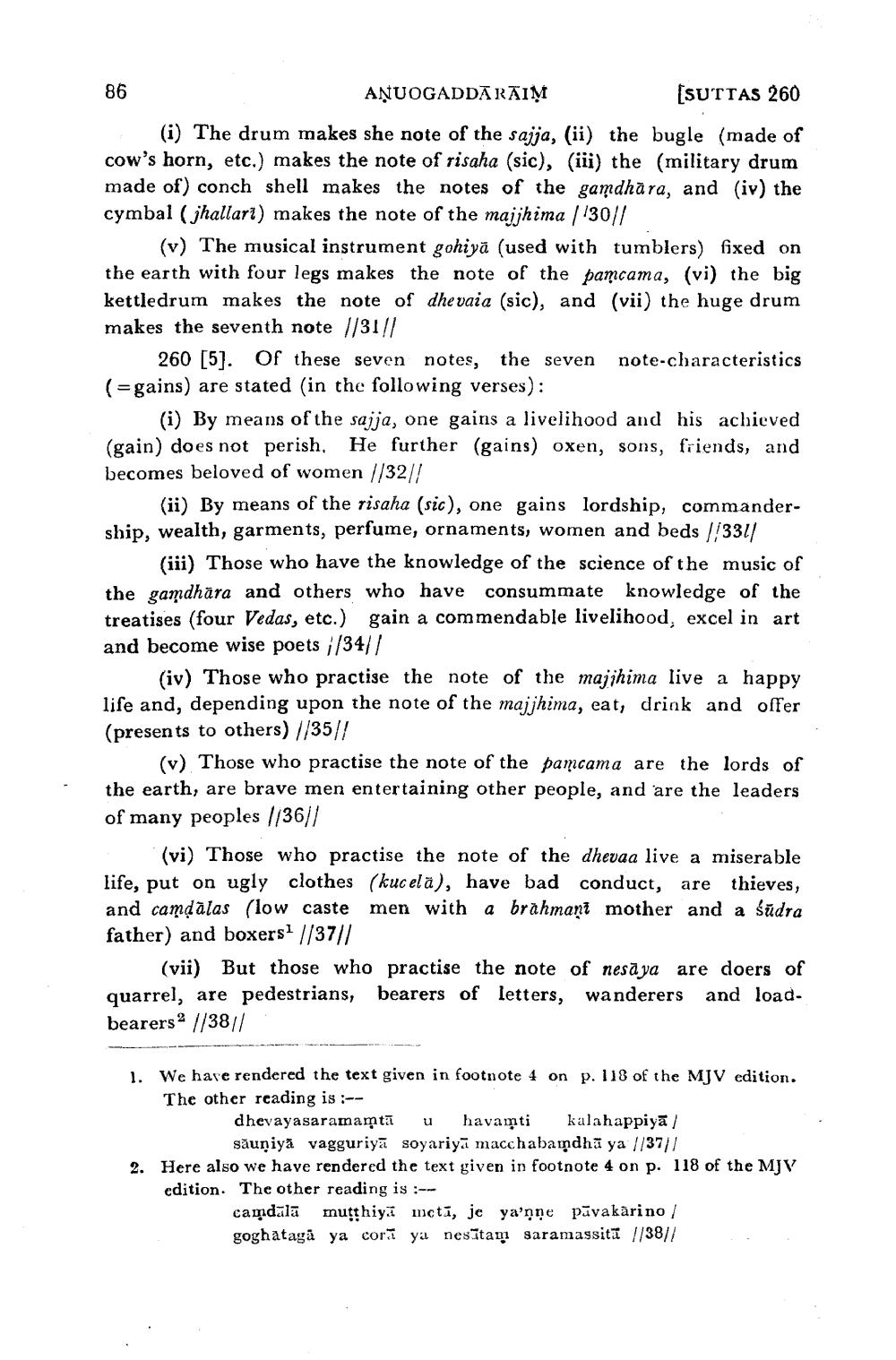________________
86
AŅUOGADDĀRAIN
[SUTTAS 260
(i) The drum makes she note of the sajja, (ii) the bugle (made of cow's horn, etc.) makes the note of risaha (sic), (iii) the (military drum made of) conch shell makes the notes of the gamdhara, and (iv) the cymbal (jhalları) makes the note of the majjhima/30//
(v) The musical instrument gohiya (used with tumblers) fixed on the earth with four legs makes the note of the pamcama, (vi) the big kettledrum makes the note of dhe vaia (sic), and (vii) the huge drum makes the seventh note //31/1
260 [5]. Of these seven notes, the seven note-characteristics (=gains) are stated in the following verses):
(i) By means of the sajja, one gains a livelihood and his achieved (gain) does not perish, He further (gains) oxen, sons, friends, and becomes beloved of women //32//
(ii) By means of the risaha (sic), one gains lordship, commandership, wealth, garments, perfume, ornaments, women and beds/331/
(i) Those who have the knowledge of the science of the music of the gamdhara and others who have consummate knowledge of the treatises (four Vedas, etc.) gain a commendable livelihood, excel in art and become wise poets i/34//
(iv) Those who practise the note of the majihima live a happy life and, depending upon the note of the majjhima, cat, drink and offer (presents to others) //35//
(v) Those who practise the note of the pamcama are the lords of the earth, are brave men entertaining other people, and are the leaders of many peoples //36/
(vi) Those who practise the note of the dhevaa live a miserable life, put on ugly clothes (kucelā), have bad conduct, are thieves, and camdālas (low caste men with a brahmani mother and a śūdra father) and boxers? //37//
(vii) But those who practise the note of nesāya are doers of quarrel, are pedestrians, bearers of letters, wanderers and loadbearersa //3811
1. We have rendered the text given in footnote 4 on p. 118 of the MJV edition. The other reading is :--
dhevayasaramamtā u havaqti kalahappiya /
săuņiya vagguriya soyariyā macchabandhū ya //37// 2. Here also we have rendered the text given in footnote 4 on p. 118 of the MJV cdition. The other reading is :--
camdala mutthiya mctī, je ya'nne pāvakarino / goghataga ya cort ya nestam saramassita //38//




